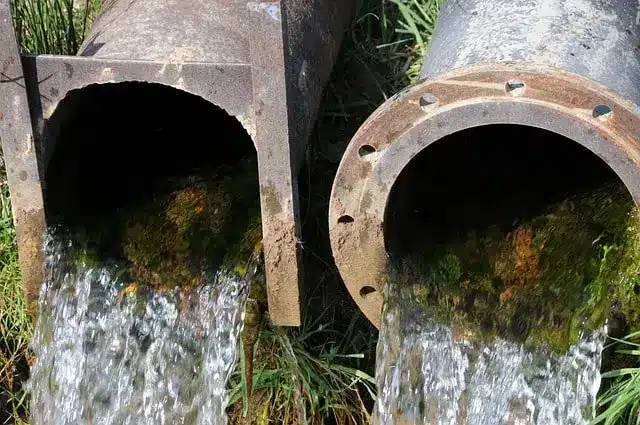Urban landscapes face a significant challenge when it comes to managing stormwater. With concrete pavements and buildings covering large areas, natural water absorption is drastically reduced, leading to potential flooding and water contamination.
This is where a city’s storm drainage system plays a pivotal role. It is a complex network designed to manage and mitigate the impact of rainwater and melting snow, ensuring public safety and environmental protection.
Catch Basins and Storm Drains
Catch basins and storm drains are vital entry points for stormwater in urban drainage systems. Strategically placed alongside streets, these grates efficiently collect runoff from roads, sidewalks, and adjacent areas, preventing surface flooding.
Their design is key to trapping debris while allowing water passage, requiring a balance between preventing blockages and maintaining water flow. Regular maintenance, including debris removal, is crucial to prevent clogging, which can lead to overflows and localized flooding.
These structures serve as the first line of defense in stormwater management, highlighting the importance of their strategic placement and regular upkeep to ensure the continued effectiveness of the overall drainage system.
Pipes And Conduits
The network of pipes and conduits forms the backbone of the stormwater drainage system. The materials used for these pipes and channels depend on various factors, including the volume of water they need to handle, the topography of the area, and budgetary constraints.
Materials like reinforced concrete, PVC, and high-density polyethylene are commonly used in many modern cities due to their durability and efficiency.
In certain urban regions, particularly those with aging pipeline systems, a technique known as Storm Drainage CIPP Lining is utilized. This method involves the insertion of a liner drenched in resin into the existing old pipe. Then, this liner is cured in place, effectively creating a new, seamless pipe inside the older one. This approach is particularly useful for renovating old pipelines without the need for extensive excavation.
Residential areas typically require smaller pipes, while larger, more robust conduits are necessary in commercial districts to manage higher water flow. The design and layout of this network are critical for ensuring efficient water transport, preventing backflow, and mitigating flood risks.
Including access points like manholes is essential for maintenance and repair, ensuring the system’s resilience and functionality.
Detention Basins And Retention Ponds
Detention basins and retention ponds are integral for managing the volume and flow rate of stormwater.
Detention basins are designed to temporarily hold excess water during heavy rains, releasing it gradually to prevent downstream flooding and erosion. In contrast, retention ponds are intended for long-term water storage, contributing to groundwater recharge and providing wildlife habitats.
While both serve similar stormwater management functions, retention ponds also enhance the local landscape, offering ecological and aesthetic benefits. Their maintenance and thoughtful integration into urban spaces are crucial for their effectiveness and the added value they bring to communities and ecosystems.
Treatment Facilities
Advanced stormwater systems may include treatment facilities, which play a crucial role in environmental protection. These facilities are designed to remove contaminants like sediments, chemicals, and organic materials from stormwater, ensuring the preservation of water quality in natural bodies like rivers, lakes, and oceans.
In urban areas, where runoff is likely to collect pollutants from various sources, these treatment processes are particularly important in preventing ecological damage and ensuring the health of aquatic ecosystems.
Outfalls
Outfalls are the final component of the storm drainage system, where collected and sometimes treated water is discharged into natural water bodies.
The design and location of outfalls are critical for minimizing ecological impacts and preventing erosion at the discharge points. These structures must ensure a smooth transition of water from the artificial drainage system to the natural environment, adhering to environmental regulations and standards.
The careful planning and construction of outfalls reflect the importance of balancing urban drainage needs with the preservation of natural waterways and ecosystems.
Maintenance And Management
Regular maintenance and proactive management are vital for the efficiency and longevity of storm drainage systems. This includes the regular cleaning of catch basins to prevent blockages, thorough inspections, and timely repairs of pipes and conduits.
Additionally, it involves the careful stewardship of green infrastructure elements, such as rain gardens and permeable pavements, and the meticulous upkeep of treatment facilities to guarantee optimal performance.
Beyond routine care, effective management also requires strategic planning to address future challenges. This includes preparing for the increased volume of stormwater due to urban development and the evolving patterns of weather and climate change.
Furthermore, ensuring that each component of the stormwater management system operates at peak functionality mitigates water-related hazards. This holistic approach is key to safeguarding communities and ecosystems against the impacts of urbanization and climate dynamics.
Conclusion
The storm drainage system in a city stands as an essential element of infrastructure, playing a pivotal role in effectively managing stormwater, safeguarding against flooding, and upholding environmental integrity.
By integrating advanced engineering, cutting-edge technology, and active community participation, these systems are instrumental in ensuring the safety, well-being, and resilience of urban areas. Consequently, these systems are not just functional necessities but also vital contributors to the overall health and sustainability of urban environments.
